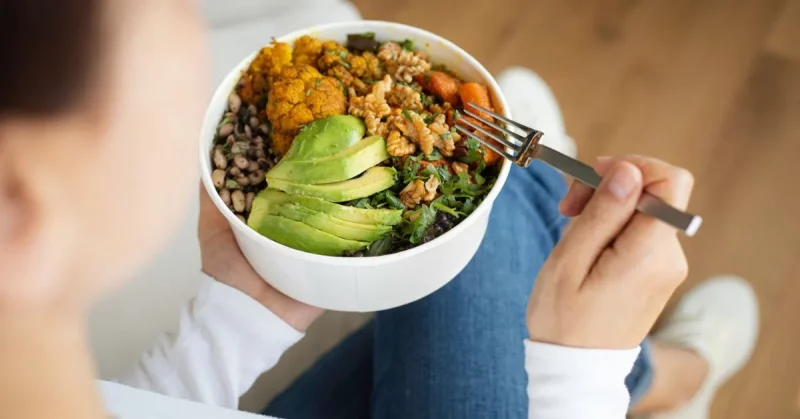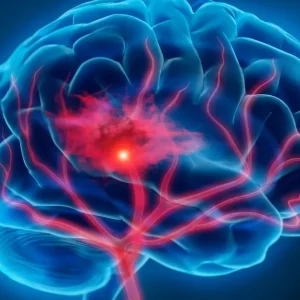Stroke continues to be one of the top causes of death and disability around the world. Over the past 25 years, the number of stroke cases has gone up significantly, especially in developing countries. The good news? Many stroke risk factors are things you can control — and one of the most important pieces of stroke prevention is diet.
If you’re recovering from a stroke or just want to lower your chances of having one, this guide will help you understand how food choices can make a big difference. Let’s explore what the research says, and how you can start eating your way toward better brain health with a diet focused on stroke prevention.
Why Diet Matters So Much for Stroke Prevention
Some stroke risk factors, like age or genetics, are out of your hands. But others — like high blood pressure, diabetes, cholesterol levels, smoking, and physical inactivity — may be very much within your control. Diet plays a huge role in managing all of these risks.
For example, studies have shown that following a diet full of foods like fruits, vegetables, whole grains, legumes, seeds, and nuts can dramatically reduce your risk of stroke. These foods help lower blood pressure, balance blood sugar, and improve cholesterol levels — all critical pieces of the puzzle. While they may not lower the risk of hemorrhagic stroke, plant-based diets can be especially beneficial for decreasing the chances of an ischemic stroke, which accounts for up to 87% of all strokes.
Let’s dive in and take a deeper look at how diet can help manage several major stroke risk factors.
How Diet Helps Manage Stroke Risk Factors
Let’s dive in and take a deeper look at how diet can help manage several major stroke risk factors.
1. Lowering High Blood Pressure
High blood pressure (hypertension) is among the biggest modifiable risk factors for stroke. Luckily, your food choices can help bring your blood pressure down naturally.
- The DASH diet focuses on fruits, vegetables, and low-fat dairy, while cutting back on saturated fats. Following it has been shown to lower systolic blood pressure by 5.5 mm Hg — enough to cut stroke risk by nearly 27%.
- The Mediterranean diet (featuring lots of olive oil, nuts, vegetables, and fish) also significantly lowers the chance of major cardiovascular events, including stroke.
- Nordic and vegetarian diets offer similar benefits, emphasizing natural, whole foods and limiting processed meat.
The takeaway: If you can fill half your plate with veggies and make olive oil your go-to fat, you’re already off to a great start.
2. Managing Diabetes with Better Food Choices
People with diabetes have a much higher risk of stroke. But the good news: diet changes can help you prevent or even manage type 2 diabetes.
- Plant-Based Diets: Emphasizing legumes, fruits, vegetables, and whole grains while avoiding processed foods and animal products, including red meats, can reduce the risk of type 2 diabetes by 16-34%.
- Lifestyle Interventions: Studies show that following a healthy diet combined with regular physical activity can be similarly or even slightly more effective than using medications like metformin in preventing diabetes.
The takeaway: Focus your meals around fiber-rich plants and healthy fats. If you already have diabetes, working closely with a dietitian can help personalize your meal plans to lower stroke risk.
3. Improving Cholesterol Levels
While the link between cholesterol and stroke isn’t as clear as it is for heart disease, lowering LDL or bad cholesterol is still crucial.
- Portfolio Diet: Including foods like soy protein, soluble fiber, nuts, and plant sterols can reduce LDL cholesterol by nearly 20%.
- Plant-Based Patterns: Mediterranean, DASH, Nordic, and vegetarian diets all help improve lipid profiles, leading to lower stroke risks.
Quick Wins: Limit intake of processed and red meats. Swap out processed meats for foods like hummus, nuts, and avocado to keep your heart and brain healthy.
4. Supporting a Healthy Gut
You might be surprised to learn that gut health impacts stroke risk too.
- Plant-Based Diets and Gut Health: Diets rich in fiber, fruits, and vegetables promote a diverse and healthy gut microbiome.
- Avoiding Red Meat: Carnitine from red meat can lead to the production of TMAO, a compound that increases atherosclerosis and stroke risk.
Friendly advice: By eating more fiber and fewer animal products, you can nourish your gut bacteria and lower your risk of stroke at the same time.
Nutritional Building Blocks for Your Stroke Prevention Diet – Quick Wins
1. Cut Back on Salt
When it comes to stroke prevention, sodium is definitely something to watch. Eating too much salt can drive up your blood pressure — and that puts your brain and heart at risk.
Here’s the good news: Cutting back on salt can lower your blood pressure and dramatically reduce your chances of a stroke or heart event.
Some easy tips to remember:
- Fresh is best. Fruits and vegetables naturally have very little salt. Stick to fresh, whole foods whenever you can.
- Try to minimize processed foods. Even “healthy” plant-based products can sneak in extra sodium, so it’s smart to read nutrition labels.
Your easy tip: Flavor your meals with herbs, garlic, lemon, or spices instead of reaching for the salt shaker. Your taste buds (and your arteries) will thank you!
2. Increase Your Fiber
Fiber might not be flashy, but it’s a true superhero when it comes to your health. A fiber-rich diet does it all — from lowering blood pressure to improving cholesterol levels, balancing blood sugar, and even helping with healthy weight management.
Some fiber all-stars include:
- Beans and lentils
- Berries
- Oats
- Whole grains like brown rice and quinoa
Aim for this: Try to get at least 25–30 grams of fiber each day. Adding a few extra servings of fruits, veggies, or whole grains is an easy way to get there.
3. Make Sure You Get Enough B Vitamins
B vitamins — especially folic acid (B9), B6, and B12 — play a key role in stroke prevention by helping keep homocysteine levels in check. High levels of this chemical in the blood are linked to an increased risk of stroke.
If you’re vegetarian or vegan: Vitamin B12 can be tricky because it’s mostly found in animal foods. You might need to add a supplement to stay fully protected.
Quick Tip: It’s a good idea to ask your doctor about checking your B12 levels, especially if you’re following a mostly plant-based diet.
4. Utilize Nuts for Snacks and Cravings
Nuts are one of the easiest and tastiest ways to boost your health. Packed with healthy fats, fiber, and essential vitamins and minerals, they’re perfect for stroke prevention. However, one thing to keep in mind is to look for unsalted varieties of nuts.
Some of the best choices for heart and brain health include:
- Walnuts
- Almonds
- Pistachios
- Pecans
Simple Snack Idea: Grab a small handful of unsalted nuts each day. They make a delicious, heart-smart snack that’s easy to fit into any routine. Beware though, that while nuts are nutritionally dense, they are also very high in calories, so limit yourself to a small handful rather than a larger serving.
What Research Says About Diet, Stroke Prevention, and Reducing Your Risk
Mediterranean Diet Success: A Heart and Brain Protector
One of the most well-known studies linking diet and stroke prevention is the PREDIMED study (Prevención con Dieta Mediterránea). This landmark research followed thousands of participants at high risk for cardiovascular events and found that adopting a Mediterranean diet — especially when supplemented with extra-virgin olive oil or mixed nuts — reduced stroke risk by an impressive 30%.
What makes the Mediterranean diet so powerful?
- It focuses on high intakes of fruits and vegetables, ensuring a rich supply of antioxidants and fiber.
- Whole grains are prioritized over refined carbs, supporting healthy blood sugar levels.
- Olive oil is the primary fat source, replacing saturated fats with heart-healthy monounsaturated fats.
- Red meat and processed foods are minimized, lowering inflammation and vascular damage.
Plant-Based Diets: The China Study
The China Study is one of the largest epidemiological studies ever conducted. It looked at rural areas of China where diets were naturally high in plant foods and very low in animal products. These areas showed dramatically lower rates of heart disease, stroke, diabetes, and certain cancers compared to Western countries.
In contrast, diets rich in meat, dairy, and salt were closely tied to much higher rates of stroke and heart disease. Researchers concluded that a whole-food, plant-based diet — rich in vegetables, legumes, fruits, and grains — offers strong protection against chronic diseases, including stroke.
The key takeaway from the study: Even modest reductions in animal product consumption, combined with eating more natural, plant-based foods, can have a huge impact on your long-term health.
Strict Vegetarian and Vegan Diets for Stroke Prevention
Several large studies have explored how plant-based eating patterns affect stroke and heart disease — and the results are impressive.
- The Adventist Health Study found that vegetarians had significantly lower rates of both all-cause mortality and cardiovascular mortality compared to non-vegetarians. In other words, they lived longer and had fewer fatal heart events. However, of note, they did find that stroke related mortality increased among older vegetarians, starting at approximately age 85.
- A study of Buddhist volunteers offered even more striking results: those following vegetarian diets had nearly 60% lower risk of both ischemic (clot-related) and hemorrhagic (bleeding) strokes compared to their non-vegetarian peers.
Importantly, both groups in the Buddhist study shared similar lifestyles — they didn’t smoke, drank very little alcohol, and were active in their communities. However, the main difference between the low and higher stroke groups? Meat consumption.
Bottom line: Choosing a vegetarian (or even semi-vegetarian) eating style can dramatically lower your stroke risk, especially when paired with other healthy habits.
DASH and Nordic Diets for Stroke Prevention
You don’t necessarily have to be fully vegetarian to protect your brain and heart. Other plant-rich dietary patterns have shown impressive results too.
- The DASH Diet (Dietary Approaches to Stop Hypertension) is specifically designed to lower blood pressure — one of the biggest risk factors for stroke. Following the DASH diet has been associated with a significant reduction in stroke risk.
- The Nordic Diet, built around traditional foods like whole grains (especially rye and barley), berries, root vegetables, fish, and low-fat dairy, showed a 14% reduction in total stroke incidence in people with high adherence.
Both diets share common features: they focus heavily on plant foods, whole grains, healthy fats, and moderate portions of animal products — without the heavy meat and processed food consumption seen in typical Western diets.
The takeaway for you: You don’t have to go fully vegan to see benefits. Simply shifting your meals toward more plants, healthy fats, and whole foods — and reducing salt and red meat — can significantly improve vascular health and lower your risk of stroke.
Easy Wins: Stroke Prevention Diet Changes to Get You Started
Not sure where to begin? You don’t have to change everything overnight. Here are some easy wins to help you get started on your stroke prevention diet.
- Add an extra serving of vegetables to lunch and dinner.
- Swap red meat for beans, lentils, or tofu a few times a week.
- Choose whole grains like brown rice, quinoa, and oats.
- Snack on unsalted nuts instead of chips or cookies.
- Cook more at home so you can control your salt intake.
- Drink more water and limit sugary drinks.
Every healthy choice you make is a step closer to better stroke prevention.
Final Thoughts: Your Stroke Prevention Diet is About Consistency
While stroke can be scary, it’s good to know that your daily habits, especially your diet, play a major role in prevention.
By focusing on a plant-rich eating pattern — packed with fruits, vegetables, whole grains, legumes, seeds, and nuts — and cutting back on salt, sweets, and meats, you can dramatically lower your risk of stroke.
Even small, consistent changes can add up to a healthier brain, stronger heart, and better overall well-being. You’ve got the tools — now it’s time to use them!










